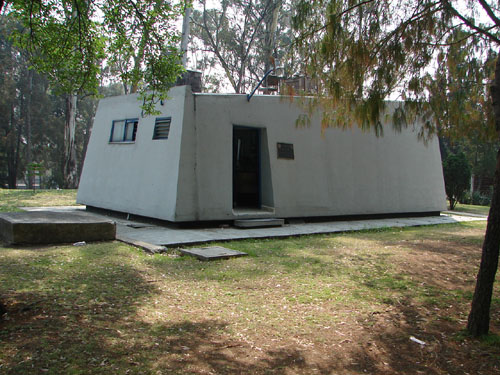
El Observatorio de rayos cósmicos de
la Ciudad de México detecta partículas que llegan desde el espacio
y que constantemente bombardean la Tierra desde todas direcciones. Forma parte
de una Red Mundial de Observatorios distribuidos en todo el mundo
En 1912 cuando Víctor Hess, un intrépido científico austríaco,
realizó una serie de arriesgados vuelos en globos aerostáticos,
superando los 5000 metros de altura. Sus mediciones le llevaron a establecer
la existencia de lo que Hess describió como “radiación
penetrante proveniente del espacio”. Años después, Millikan
los bautizaría como “rayos cósmicos”; cósmicos
por su evidente origen en el espacio exterior y rayos porque se sospechaba
que se trataba de rayos gamma, radiación recién descubierta
en ese entonces.
Hacia 1930 se comenzaron las investigaciones para dilucidar si se trataba
de partículas o de radiación electromagnética; las mediciones
de Compton resolvieron el dilema y se habló ya de partículas,
aunque no se sabía cuales. Pero en 1932, el belga George Lemaitre y
el mexicano Manuel Sandoval Vallarta, paralelamente, el italiano Bruno Rossi,
predijeron que habría una diferencia entre las partículas que
llegaran del Este y las del Oeste. Fue en la Ciudad de México donde
Luis Alvarez y Arthur Compton detectaron el efecto, quedando establecido que
los rayos cósmicos eran partículas con carga igual a la del
protón. En 1948, con objeto de monitorear la intensidad de la radiación
cósmica en la ciudad de México, la Carnegie Institution instaló
una Cámara de Ionización, ocho años más tarde,
con el desarrollo de nuevas tecnologías y con vistas a participar en
el Año Geofísico Internacional, la Universidad de Chicago instaló
un monitor de neutrones del tipo Simpson. Para 1964, el Instituto de Geofísica
adquirió un supermonitor de neutrones NM64 y se hizo cargo del monitor
Simpson. Cada uno ocupaba distintos edificios. Hasta 1973 se les conocìan
como la Estación Vieja (Simpson) y la Estación Nueva (NM64).
Actualmente, el monitor Simpson se encuentra desmantelado.
El Observatorio de Rayos Cósmicos instalado hoy día dentro de
la Ciudad Universitaria consta de dos tipos de detectores: un supermonitor
de neutrones 6NM64 y un telescopio de muones, que detectan la componente nucleónica
y dura de la radiación cósmica secundaria, respectivamente.
El rango de detección de estos instrumentos varía desde los
8.5 hasta los 200 GeV de energía. (1 GeV= 10 9 eV)
El monitor de neutrones de la Ciudad de México, ubicado a 2274 m sobre
el nivel del mar y con una rigidez umbral de 8.2 GV se encuentra funcionando
en forma continua desde 1990. El telescopio de muones se halla en proceso
de modernización.
El monitor NM64 consta de 6 contadores proporcionales de Trifluoruro de Boro
(BF3). La intensidad de la radiación cósmica es afectada por
los cambios de presión, asì pues, es necesario hacer correcciones
a la intensidad detectada en los instrumentos para eliminar las variaciones
debidas a la atmósfera. Para ello, se registra la presión atmosférica
paralelamente a la intensidad de los rayos cósmicos, para lo cual se
utiliza un barómetro digital Meteolabor-ag GB1.
Los datos que arroja todo el sistema de detección son recolectados
por un sistema de adquisición de datos que fue diseñado y construido
por los técnicos a cargo del Observatorio. Este sistema vierte la información
en una computadora personal. Recientemente se llevó a cabo una modernización
y ahora tenemos ya los datos en tiempo real disponibles para la comunidad
y el público en general.
| |


